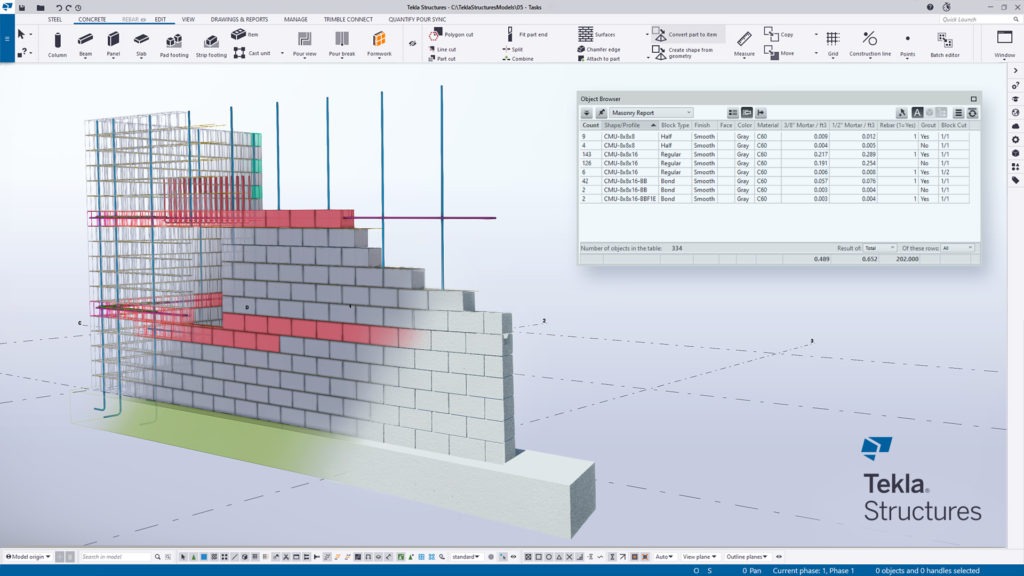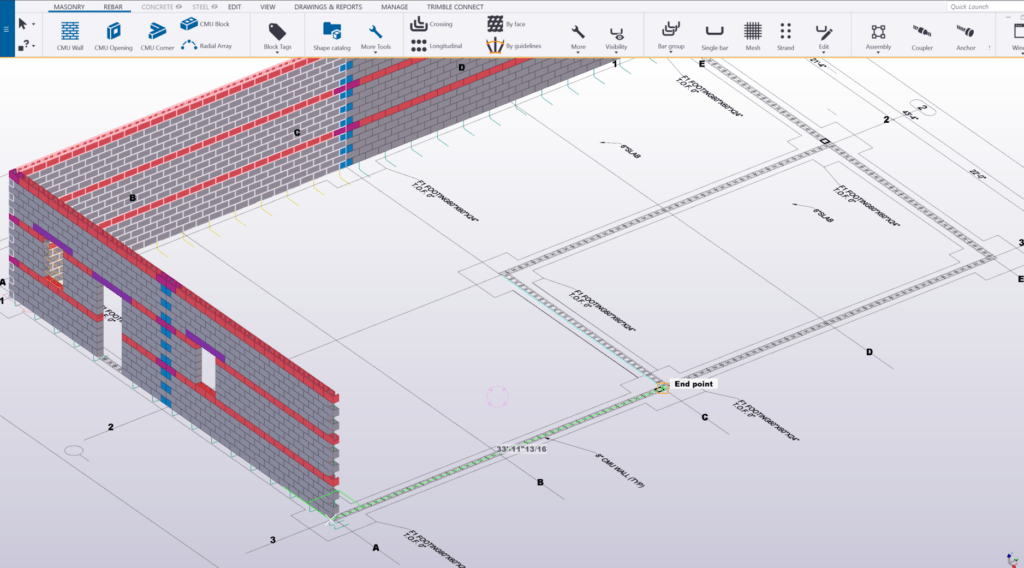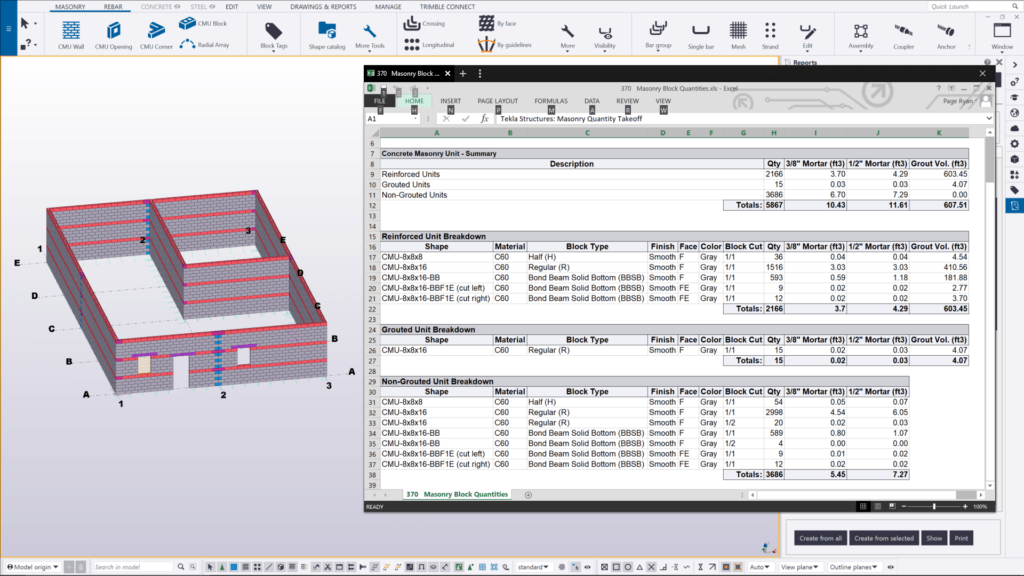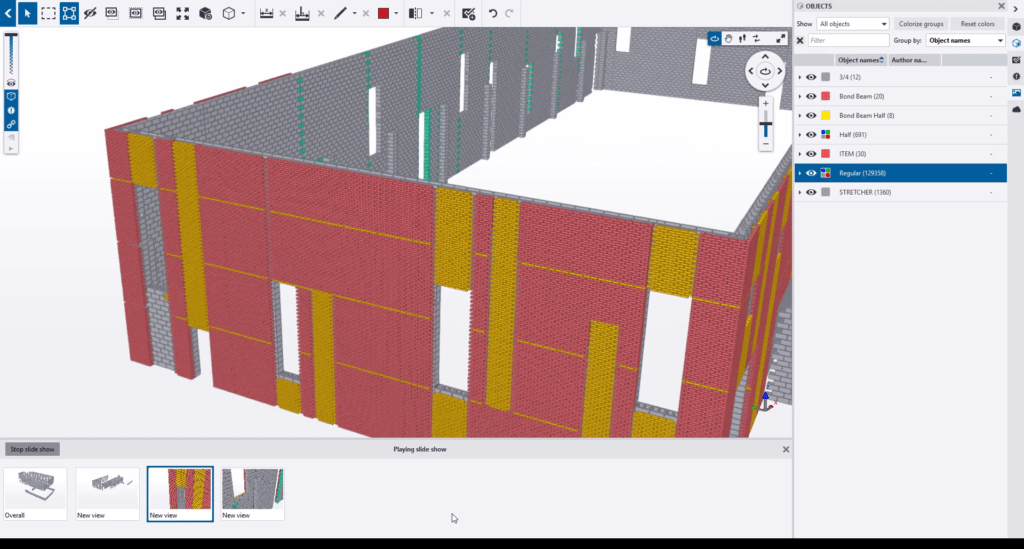Words and Photos: Guy Erickson, Trimble
The conversation around technology in construction has been around for some time. It is no secret that the industry is facing many factors that impact the way we do business. An increased number of projects, build complexity, safety conditions, and a changing market are all factors in getting the job done. It is estimated that approximately 77% to 80% of projects are delivered over budget and behind schedule. Most due to the reasons already mentioned above. That is why accurate, timely project information plays a key role in delivering successful projects. That information helps keep things on time, and within budget. That’s where the topic of technology in construction may warrant a look, or a second one if you’ve looked into it in the past.

Technology will always play a role in addressing pain points in construction. Innovations in technology can give contractors a competitive edge. Using technologies, contractors can bid with better estimates. They can also manage projects more effectively. Not to mention schedule realistically, and leverage office-to-field coordination in real-time. Companies can improve these areas, and a few more, via Building Information Modeling (BIM). Whether you’ve looked at BIM for masonry before, or you’re starting to gather information, there can be a lot to digest. Let’s discuss a few of the major benefits of BIM that masons are starting to take advantage of in their processes and workflows.
Constructible Models with 3D BIM
Using constructible models has become a growing trend in our industry. A constructible model is a 3D model that is accurate enough to build from. Models are created in specialized software, such as Tekla Structures. These models allow for gathering quantities, creating drawings, and communicating construction status on any given project. Models can act as a single source of truth and a focal point for common construction practices. The benefit of using a construction model is that contractors can focus on issues and logistics while still producing necessary deliverables in a fraction of the time.

Contractors can build 3D models from scratch or use 2D documents as references within the model environment to create the model itself. That means design intent can be transformed into an accurate representation of the work to come. With BIM, contractors build the models the way they are built in the field. The better information, and the more accurate the model, the more reliable the output becomes. This allows contractors to make better-informed decisions and reduces the risk of consequences in time or money. BIM offers the project team better insight into how things come together. This insight pays forward to the industry’s most common requirements. Documents such as Quantity Take-Off (QTO), bill of material, or expedited drawing creation have a reduced production time. It also allows the model to inform processes and logistics throughout the project lifecycle.
Streamlined Deliverables

For any company, deliverables make the project happen and the job cannot get done without them. As technology grows and is further adopted, these requirements may also evolve, but for the time being, they are here to stay. The key thing to understand about a constructible model is that production time for deliverables is reduced. And changes are instantly updated. That’s why building a constructible model is so valuable. It can happen in less time that it takes to create a full design set of drawings and eliminates many redundant tasks and human errors.
Reporting and Quantity Take-off
Any object created in a construction model inherently has data associated with it. This data pertains to its physical representation. That means important quantities such as the total number of identical items are instantly available. Not to mention the physical dimensions surface area, volume, and much more are present and available for viewing as soon as the object(s) are created. Additionally, objects can be tagged with supplemental data such as color, finish, unique IDs, and much more. This data is what takes a constructible model from being a pretty picture to something useful. Authoring software for BIM models, like Tekla Structures, can aggregate this information and produce formatted reports. These reports provide a breakdown of a model (or a given area of a model) with just a few clicks of a button. The fast nature of generating these reports allows users to focus on accurate modeling. Affording a better understanding of the details that matter without sacrificing production time.
Efficient Drawing Creation
Like reports, drawings are also fast and efficient. With BIM, there is no drafting. Drawing views of the model is just that, a view of a model. The line work is presented in a traditional manner that conveys the intent of a drawing. Users only need to add dimensions, annotations, or more views to convey the intent of the drawing. Changes in the model are instantly updated in the drawings. That goes for tables and charts as well. Tables are populated based on what is shown in the views of the drawing. Users have the ability to filter out specific objects that must be shown but not accounted for. The nature of BIM allows drawing production to be reduced task time. Not to mention reducing the likelihood of human error during production.
From Office to the Field

Viewing and collaboration software such as Trimble Connect allows people from all levels of the project to view. Viewing software often has desktop, web, and mobile applications which are all accessible and easy to learn. That means field crews can interact with BIM models and 2D documents right where they need it most. Many masonry and construction companies have made efforts to be more eco-friendly. They achieve this by adopting digital media in the field with laptops, tablets, and phones. The ability to have access to viewable models in the field is already becoming more commonplace. This means a constructible model is also a deliverable and companies can leverage this with their crews. Using models in the field for pre-job briefs, construction status, and issue reporting are some of the most impactful possibilities.
Having the model in the field allows field crews to instantly gauge the constructability of a project as they need it. It not only allows them to associate drawings with model objects but also quantifies the model. They can also isolate specific areas, obtains information on objects, and see how it interacts with other model references such as steel, all on their own. Providing this visualization is great but the real value lies in enabling your experts to put their eyes on your model before and as it is being built. This provides an unparalleled level of collaboration from one consistent source: your BIM-M model.
Layout & Scanning
Robotic Total Stations like Trimble manufactures are being used on job sites for better accuracy, productivity, and quality control. Layout points can be generated in a traditional way or by using layout points from the 3D BIM. Layout Points can also be brought back into the 3D model for as-built information. Robotic Total Stations can be operated by a single user with handheld or tablet devices and have the ability to speed up project layout. RTS gives projects the opportunity to realize gains in Speed, Efficiency, and Accuracy.
3D Scanning projects are also becoming common practice. Point clouds can be generated to review pre-construction elements of a project and during construction to monitor progress. Floor flatness, rebar installation, and penetrations can be reviewed for future use. Also, there are benefits to understanding existing projects for expansion, tenant improvements, and renovations.
Final Thoughts
As technology continues to advance, new opportunities exist for contractors and the industry to become more efficient. The good news is that the cost of adopting technology for construction continues to come down with faster implementation into organizations workflow and project stakeholders. Constructible models via Building Information Models (BIM) can give the edge to masonry contractors to get the job done more efficiently and with better communication.